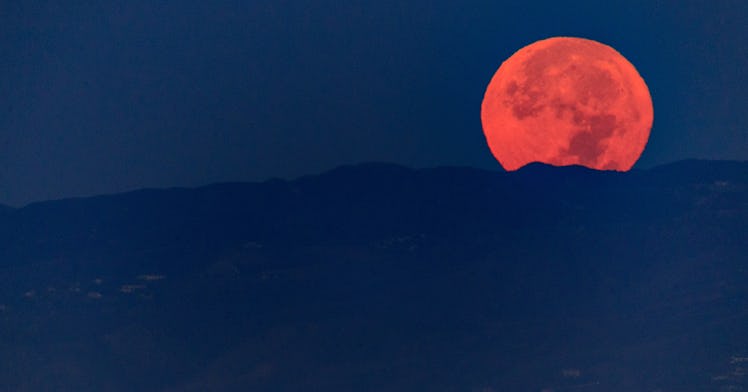Staring at This Week’s Pink Supermoon Might Help You Forget About the Coronavirus
Some of the best moongazing is actually before and after its peak on Wednesday.

The second supermoon of the year is happening on Wednesday, a so-called pink supermoon that could be the distraction from the unpleasantries of the coronavirus that you and your family need.
April’s full moon gets the pink moon moniker because of the spring blossom of pink phlox flowers that accompany it in the United States. Alas, it won’t actually be pink, but there will still be plenty to see.
That’s because the moon, at just 221,851 miles away, will be close enough to reveal many of the features on its surface. From the northern hemisphere, you’ll be able to see an 800 million-year-old, nearly 58-mile wide crater called Copernicus along with Aristarchus, a crater to its left, and Tycho, a massive impression near the bottom of the moon.
It might actually be easier to make out these features a day or two before or after the peak supermoon when it isn’t quite as bright. That means you can actually start moongazing tonight, assuming the weather is cooperative wherever you are riding out the crisis.
According to NASA, a perigean full moon happens when the moon is both in its full phase and nearest its perigee, the point in its elliptical orbit where it’s closest to earth. The term “perigean full moon” is a bit of a mouthful, however, so the more informal “supermoon” came into use in 1979.
Wednesday’s moon will be 221,851 miles away, or 16,004 miles closer than average. That may not seem like much, but it means the moon will look up to 14 percent larger to a moon and 30 percent brighter than it does at its apogee, the point at which it’s farthest from the earth.
There’s never a bad time to stargaze with your kids, but it’s a particularly satisfying activity now given the rapid shrinking of lives that until recently included the schools, offices, restaurants, and other places of public assembly now closed to slow the spread of COVID-19.
Checking out out the supermoon from the comfort of your backyard (or with proper social distance at a local park) could give you and your family a small measure of relief from the stresses of the pandemic ravaging the planet it orbits.
This article was originally published on